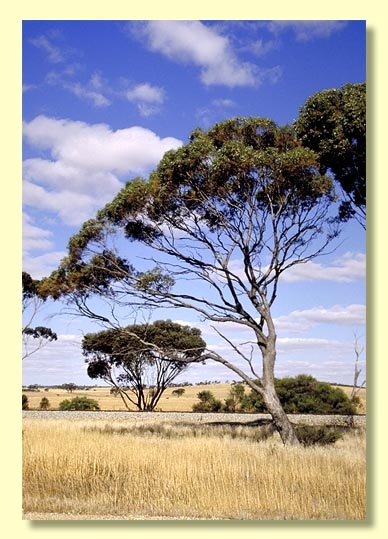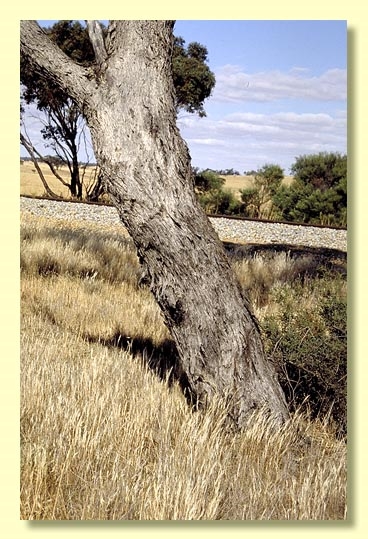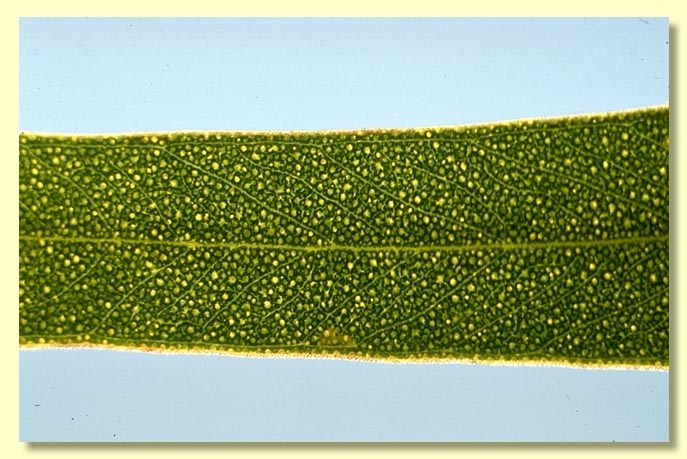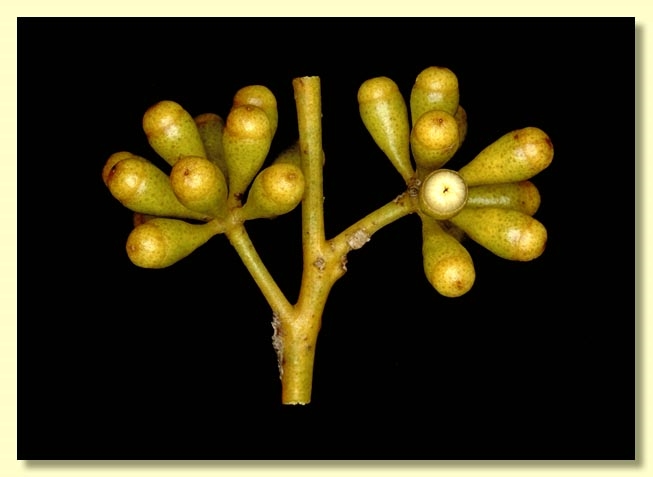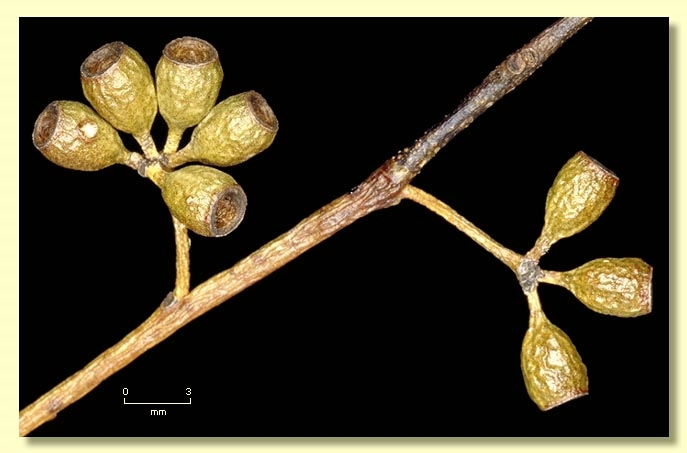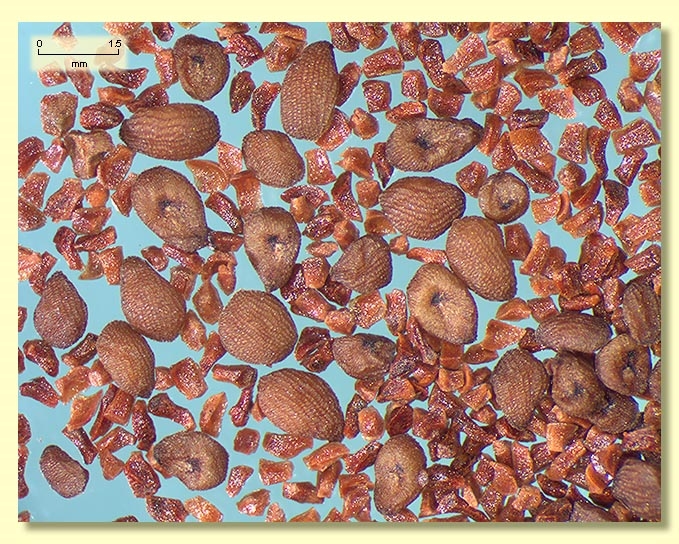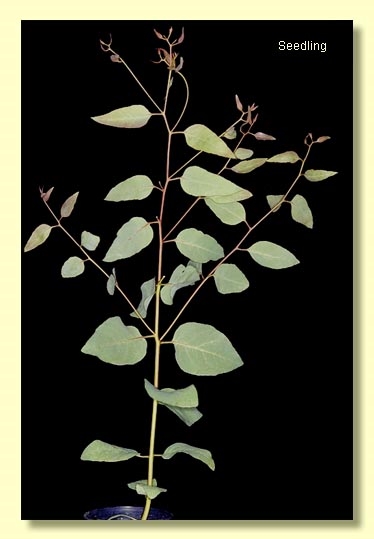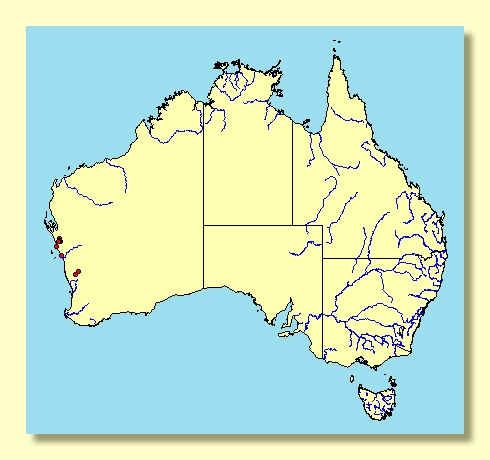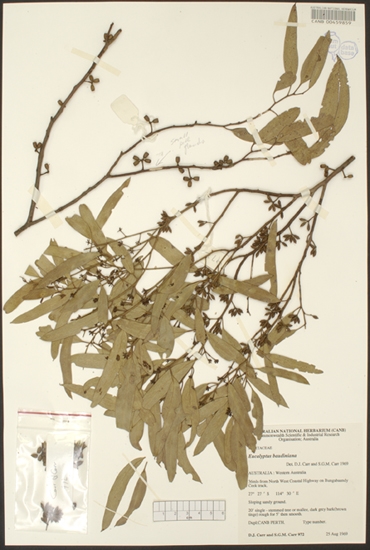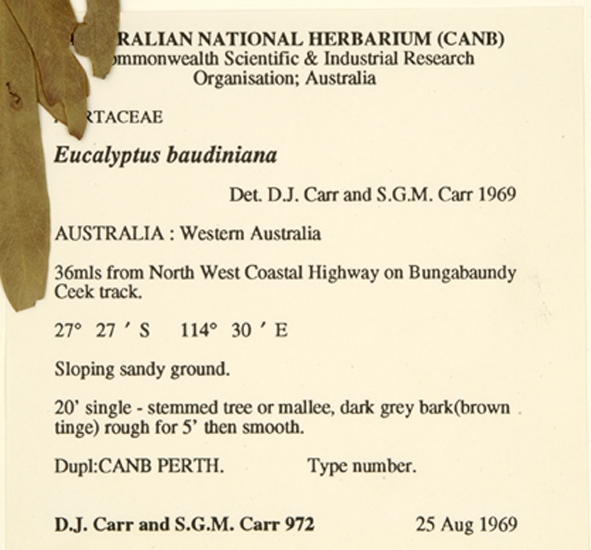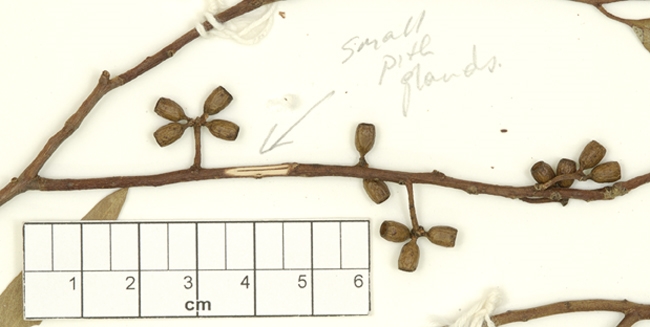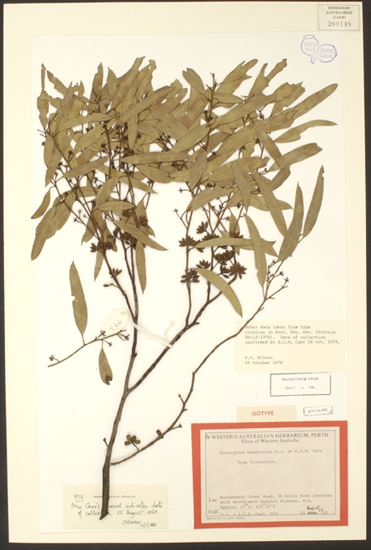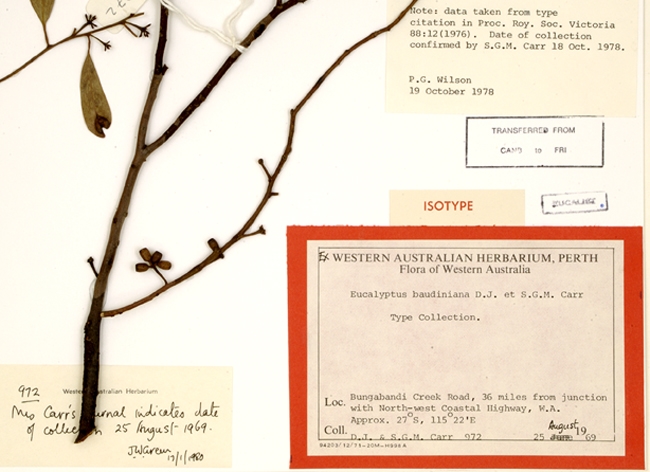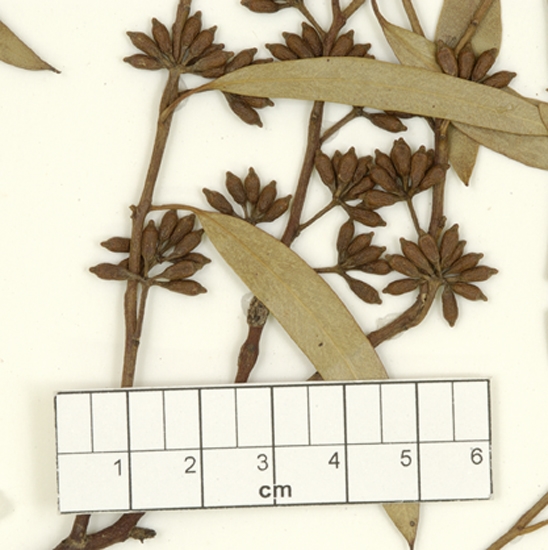Eucalyptus | Symphyomyrtus | Dumaria | Ovulares
Euclid - Online edition
Eucalyptus baudiniana
Bark rough over part or all of trunk, fibrous to flaky, dark grey, then becoming smooth, grey-brown to brown.
Branchlets with oil glands in the pith, sometimes sparse and only found at the nodes.
Juvenile growth (coppice or field seedlings to 50 cm): not seen.
Adult leaves alternate, petioles 0.7–1 cm long; blade narrowly lanceolate to falcate, 4.5–9.5 cm long, 0.5–1.5 cm wide, base tapering to petiole, margin entire, apex pointed, concolorous, glossy, green, side-veins acute or sometimes at an angle greater than 45° to midrib, reticulation usually moderate to dense and broken, sometimes obscured by the island and intersectional oil glands, intramarginal vein present.
Inflorescence axillary unbranched, peduncles narrowly flattened, 0.5–1 cm long, buds 7 to 15 per umbel, pedicels 0.2 cm long. Mature buds obovoid (0.5–0.8 cm long, 0.3–0.4 cm wide), scar present (outer operculum lost early), inner operculum rounded and apiculate to shortly beaked (0.15–0.2 cm long), stamens inflexed, anthers cuboid to wedge-shaped, versatile, dorsifixed, dehiscing by longitudinal slits, style long and straight, stigma quite blunt, locules 3(4), the placentae each with 4 vertical rows of ovules. Flowers white.
Fruit pedicellate (pedicels 0.1–0.2 cm long), barrel-shaped, 0.4–0.6 cm long, 0.3–0.4 cm wide, disc descending vertically, valves 3(4), enclosed.
Seeds brown, 1–1.5 mm long, flattened-ovoid sometimes pointed at one end, dorsal surface clearly but shallowly reticulate, hilum ventral.
Cultivated seedlings (measured at node 10): cotyledons reniform; stems rounded in cross-section, smooth or sometimes slightly warty; leaves always petiolate, opposite for 5 to 7 nodes then alternate, ovate-deltoid at lower nodes becoming narrowly ovate, 5.5–7 cm long, 2.5–4 cm wide, dull green.
Flowering has been recorded in November.
A spreading small tree with a glossy green crown and rough trunk endemic to Western Australia where it grows on calcareous sandy loams or gypseous clay soil sometimes near salt lakes. It is found from north of Kalbarri south-east to Yarra Yarra Lakes, Perenjori and Coomberdale.
Eucalyptus baudiniana belongs in Eucalyptus subgenus Symphyomyrtus section Dumaria because the buds have two opercula, stamens are strongly inflexed, ovules are in four rows on the placentae and cotyledons are reniform. Within section Dumaria it belongs to a small sub-group of nine closely related species which are together called series Ovulares. The series is further diagnosed by glandular pith, cuboid-wedge shaped anthers, and seeds with a brown shallowly and clearly reticulate dorsal seedcoat.
Some of the species in series Ovulares are completely smooth-barked (E. cyclostoma, E. cylindrocarpa, E. exigua and smaller plants of E. oraria) while others (E. aequioperta, E. baudiniana, E. comitae-vallis, E. myriadena and E. ovularis) have rough bark over at least part of the stems.
E. baudiniana has been confused with the more coastal species E. oraria, which is a mallee or low tree with little or no rough bark, has slightly broader leaves and larger, shortly pedicellate to sessile fruits. Other rough-barked species in series Ovulares have more southerly and easterly distributions. E. baudiniana is closely related to E. myriadena, which has denser oil glands in the leaves and occurs in the central wheatbelt and adjacent goldfields and appears to be somewhat salt tolerant.

